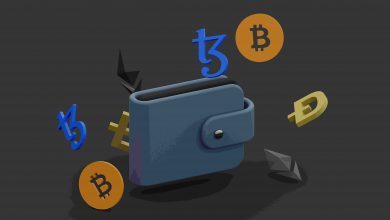Coaching your employees and training them in the use of a particular corporate solution is an important aspect of its success. Even though the VDR often comes in a basic package with some sort of protection against human mistakes, you still need to look at educating your employees. Today we’re going to focus on the topic of VDR elections, and in general, our entire article will revolve around this topic so that you understand what this product and corporate solution are.

Contents
The emergence of virtual data rooms can be attributed to the development of CDs and local area networks, which led to the demand for secure digital storage and sharing. In contrast, before that, the only option was physical storage facilities with limited access and constant monitoring.
Access to physical data rooms was strictly controlled, with searches conducted on entry and exit and no documentation allowed to be taken out. The introduction of CDs soon displaced paper-based documentation, with racks of CDs being stored in these secure rooms. Monitoring and searches remained a feature of these physical data rooms. With the advent of local networks, privately developed VDRs began to emerge in large corporations like Microsoft and Google. These companies paved the way for enterprise solutions using cloud computing technology.
The market today is filled with unique proposals from developers with diverse perspectives, leading to a surge in momentum during the COVID-19 pandemic’s outbreak. As the pandemic forced businesses and workers to transition to remote work, the need for secure storage solutions that provide adequate protection and emergency access to records became apparent. Beginning in 2019, private developers have been conducting extensive research within their organizations, offering exceptional opportunities to distinguish themselves in a crowded market.
VDR in the context of mergers and acquisitions
The virtual data room is one of the most popular tools for conducting mergers and acquisitions. This kind of choice among entrepreneurs is not accidental because the VDR has a huge number of tools in addition to its main function. Some entrepreneurs still think that a VDR can only provide a cloud-based solution in terms of information storage, but this is not entirely true. The virtual data room m&a currently has the following important features for deals such as mergers and acquisitions:
- It offers increased security as well as transparency in carrying out various kinds of transactions on this platform. Most businesses look solely at VDRs as the only tool that can provide this level of security through encryption and other tools. At the same time, VDRs provide transparency of all completed actions to increase trust between two companies or two employees.
- This offers great opportunities to automate routine tasks. Moreover, it is possible with artificial intelligence or with traditional methods. You can log any action, track activity, and then produce some kind of analysis result with modern technology, which in most cases is very convenient.
- And you can also count on the basic function, which is based on data storage. You should talk to a VDR developer representative, as some of them provide unusual storage plans.
These few benefits don’t completely describe a VDR, but you can imagine exactly how they would be useful for mergers and acquisitions. You can ask the VDR developer’s representative about exactly how they can help you with this complex transaction. The VDR is also helpful in gathering documents for due diligence or post-transaction. In general, the VDR is discussed on a par with pressing business issues, such as those discussed in this https://mnacommunity.com/insights/investment-banking-interview-questions/ article.
Employee training for M&A
Training your employees is a critical component of conducting a successful merger and acquisition using a VDR. According to mergers and acquisitions news, without proper preparation, employees may struggle to navigate the complexities of the transaction and causing unnecessary delays. To prevent this, consider the following tips:
- Before designing a training program for new employees, conducting a thorough needs analysis is crucial. This involves identifying any areas of skill or knowledge gaps that need to be addressed to ensure their success within the organization. To perform this analysis, review job descriptions, conduct employee and supervisor interviews, and gather feedback through surveys to gain a comprehensive understanding of their training needs.
- To ensure that your employees are well-equipped to handle their job responsibilities and feel at ease within your organization, it is important to set clear training goals. After conducting a thorough analysis, you can identify the areas where your employees need to improve and develop specific learning objectives for the training program. These goals must be aligned with the company’s overall objectives and should also meet the expectations set for employee performance.
- To ensure your employees are equipped with the necessary skills and knowledge, it’s crucial to develop training goals that align with your company’s objectives and your employees’ performance expectations. A thorough needs analysis will help identify the specific areas that require attention. In light of this examination, set learning targets that are explicit, quantifiable, reachable, significant, and time-bound. Thus, you can create a successful preparation program that assists your representatives in flourishing in their jobs.
- Find a trainer who can expertly explain some aspects of VDRs. Appoint a mentor or coach for new employees to help guide them through the transition and provide support. The mentor or coach should be a senior employee with company or industry experience.
- Provide employees with ongoing feedback on training to track their engagement. Provide ongoing feedback and support to new employees to help them stay on track and make progress. Regular check-ins, coaching sessions, and performance reviews will help identify areas for improvement.
- Evaluate the effectiveness of the program with built-in or self-administered tests that you can provide to your employees in terms of m&a insights. This is necessary to identify areas for improvement. Use employee and supervisor feedback, as well as performance and retention data, to make the necessary adjustments.
Once you follow these steps, you will see systematic learning that leads to a real breakthrough in the end. Your employees, after this framework, will really know what they’re doing and make minimal mistakes to improve your performance and annual income.



